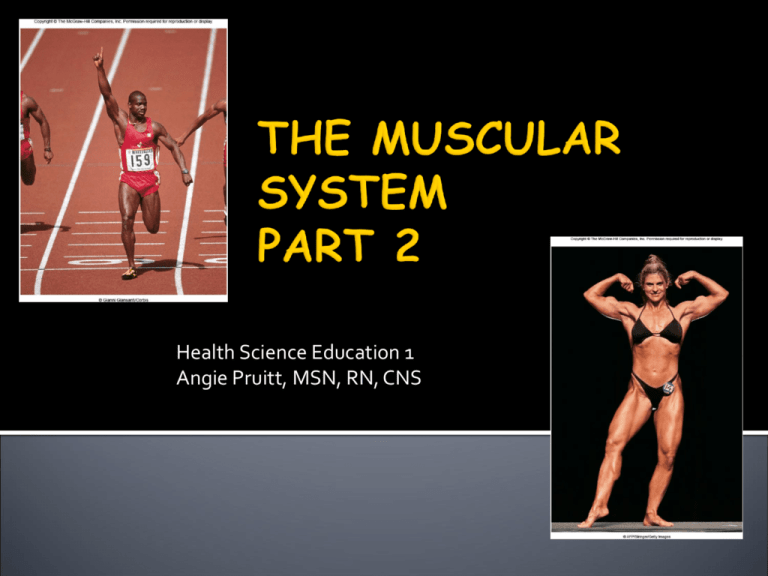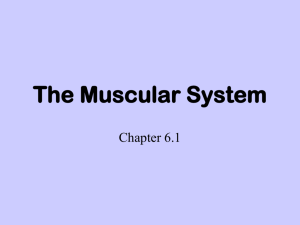Visceral smooth muscle
advertisement

Health Science Education 1 Angie Pruitt, MSN, RN, CNS Involuntary Movement and Lack Striations Involuntary or unconscious control Contraction essentially the same as skeletal The cells have important differences. Elongated with tapering ends. (remember skeletal muscle was elongated with round ends) Contains filaments of Actin and Myosin, organized differently, more random NOT STRIATED because Actin and Myosin are arranged differently. Multiunit smooth muscle: In irises of the eyes Walls of the blood vessels. Visceral smooth muscle: more common type of smooth muscle in the walls of hollow organs ▪ stomach, intestines, urinary bladder, and uterus. http://www.youtube.com/watch?v=Ln09qihUi3g&feature=related Smooth muscle fibers One fiber is stimulated, the impulse moves over its surface exciting adjacent fibers Visceral smooth muscles Rhythmicity-a pattern of repeated contractions. Remember Peristalsis?? http://www.youtube.com/watch?v=o18UycWRsaA&feature=related Smooth muscle like skeletal muscle contracts by reactions of Actin and Myosin. 2 neurotransmitters in smooth muscle: Acetylcholine Norepinephrine. Stimulates contractions in some smooth muscles and inhibits contractions in others. Hormones also affect smooth muscle. Slower to contract and relax Maintains a forceful contraction longer. Change length without changing tautness The stomach and intestinal walls stretch as the organs fill. Moving on to Cardiac Muscle This is called progress! Only in the heart Striated cells joined end to end, forming fibers. Intercalated disks allow muscle impulses to pass freely so they travel rapidly from cell to cell. Cardiac muscle is self exciting and rhythmic. A pattern of contraction and relaxation repeats again and again and causes the rhythmic contractions of the heart. Cardiac muscle is involuntary. As stated previously, skeletal muscles provide a variety of body movements. Each muscles movement depends on the kind of joint it is associated with and the way the muscle attaches on either side of that joint. Bones form moveable joints and function as levers. End of a skeletal muscle fastens to a relatively immovable or fixed part at such a joint, Other end connects to a moveable part of the other side of the joint. The immoveable part is the origin The movable end is its insertion When a muscle contracts, its insertion is pulled toward its origin Some muscles have more than one origin or insertion. Example: the biceps has 2 origins. The word biceps means 2 heads. The head of a muscle is the part nearest its origin. Attaches at 2 spots on the scapula Individual muscles Muscles are named according to any of the following criteria: size,shape, location, action, number of attachments, or direction of its fibers.








